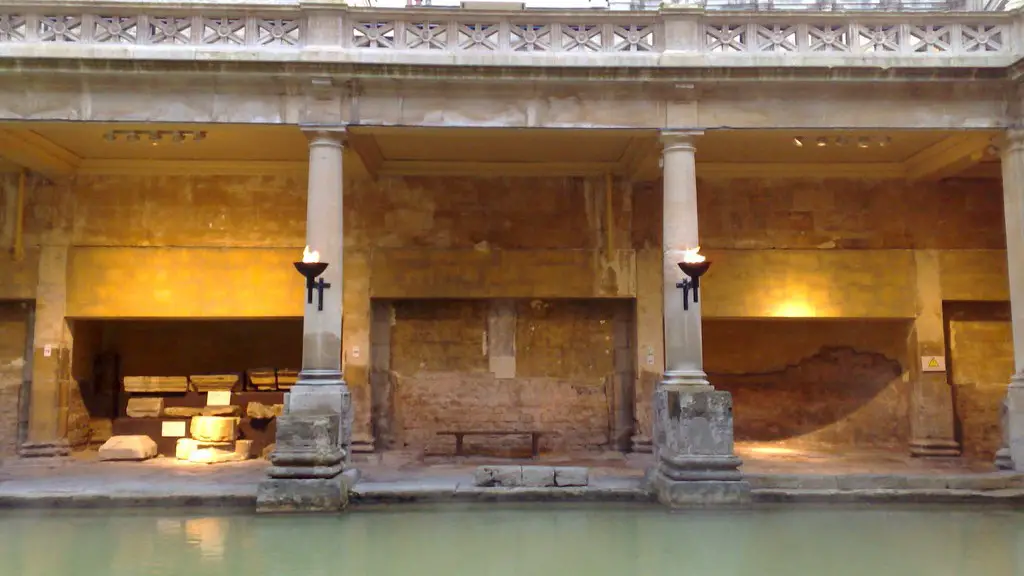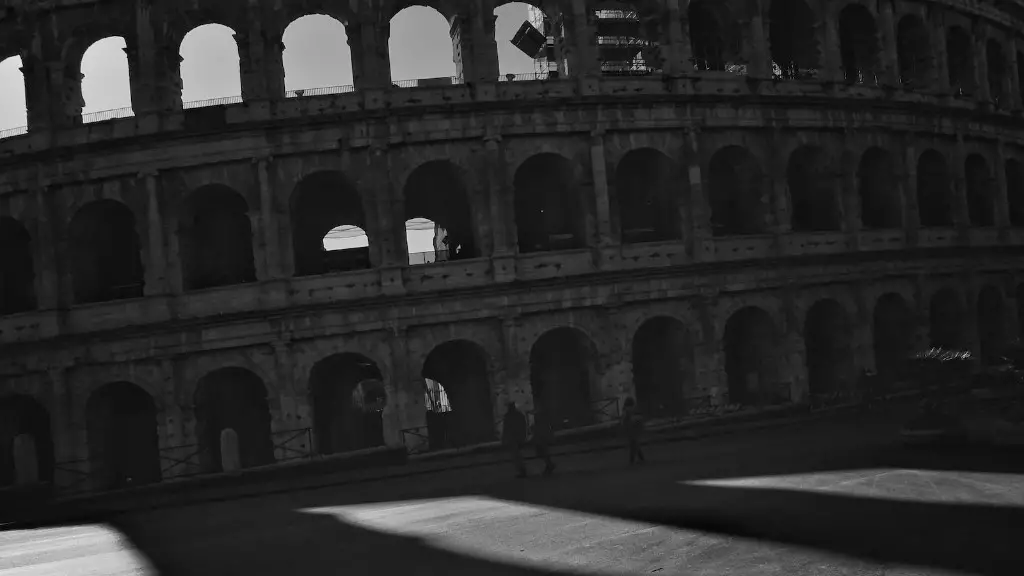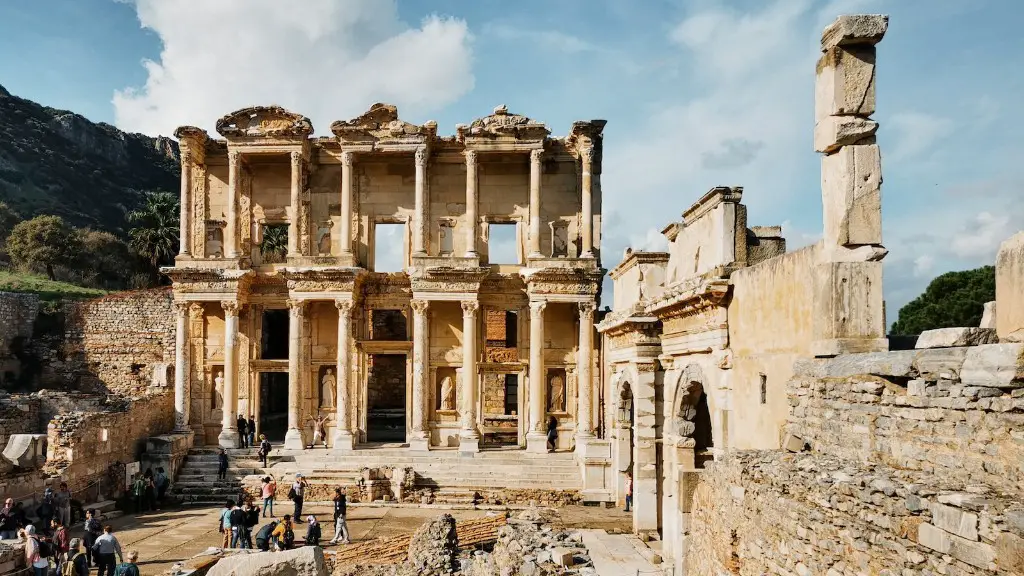The ancient Romans were one of the most impressive cultures of their time. They were renowned for their architecture, engineering, and military prowess. One of their most impressive feats was their ability to build roads. The Roman road system was the most extensive and sophisticated of its time. It allowed for fast and efficient travel across the empire. The roads were so well built that many are still in use today.
The ancient Romans built roads by constructing a foundation of large stones, which were then covered with smaller stones and packed with dirt. This created a sturdy surface that could withstand heavy traffic. The roads were also sloped slightly so that water would drain off to the sides.
How do Roman roads last so long?
The roads that the ancient Romans built were some of the most impressive feats of engineering in the ancient world. These roads were made from aggregates – lots of different sized stones that compacted down to create a strong, stable and long-lasting surface. These roads could stand up to the marching of hundreds of soldiers, and carts laden with supplies. The roads built by the Romans were an essential part of their empire, and helped them to maintain their control over the vast territory that they conquered.
It was expected that the rate of construction would be 1 1/2 yards (135m) per man per day (at 16ft – 48m- most roads were just over 5 yards wide), but in at least one case 2 yards per man per day was achieved.
Why were Roman roads so straight
The Romans were known for their engineering and construction abilities, so it’s no surprise that they built straight roads. By keeping roads straight, they were able to travel more quickly from one point to another. This was especially important for the military, who needed to be able to move troops quickly. In addition, winding roads could be more dangerous, as bandits and robbers could be hiding around bends.
Roman roads are still visible across Europe. Some are built over by national highway systems, while others still have their original cobbles—including some of the roads considered by the Romans themselves to be the most important of their system. The Roman road system was the largest and most extensive of its time, and Roman roads are still considered some of the best engineered roads in history.
What 4 layers did the Romans use to make roads?
Most Roman roads were built using a combination of earth, gravel, and crushed bricks. The most prestigious roads had a top surface of dressed stone blocks, cobbles, or slabs of volcanic tuff, limestone, or basalt. This provided a smoother surface for travelers and helped to prevent the roads from becoming too muddy or dusty.
The Laws of the Twelve Tables were a set of laws created in order to standardize Roman law. Among other things, these laws stipulated that any public road must be 8 Roman feet (approximately 237 meters) wide where straight, and twice that width where curved. This helped to ensure that Roman roads were built to a consistent standard, making travel and trade easier and more efficient.
How deep were Roman roads?
It is interesting to note that the average depth of metalling on Roman roads is approximately 51 cm (20 inches). However, there is great variation in depth from as little as 10 cm (4 inches) to 4 m (13 feet) in some places. This probably reflects the fact that these roads were constructed over a period of centuries.
While the Roman roads were certainly impressive for their time, modern engineering has allowed for roads to be built that are far stronger and more durable. Through the use of interlayers, modern roads can easily withstand heavy traffic and last for many years with minimal maintenance. This is a vast improvement over the Roman roads, which were often damaged and required frequent repairs. In addition, modern roads can carry far more weight and traffic than the Roman roads ever could, making them much more efficient for modern transportation needs.
What was wrong with Roman roads
Ruts and potholes are a pain for everyone, not just modern drivers. The Roman road in Ipplepen, which was discovered in 2015, shows that even the Romans had to deal with this problem. The ruts were most likely caused by horse-drawn carts that frequently traveled along the road. While we may not be able to totally avoid ruts and potholes, at least we can take solace in knowing that we’re not the only ones that have to deal with them!
All roads in the Roman Empire were built by the Roman military. There was nobody else who could do it. So the Roman military employed specialists within the Roman units to actually do the work.
How did the Romans transport water uphill?
The Roman aqueduct was a channel used to transport fresh water to highly populated areas. Aqueducts were amazing feats of engineering given the time period. They were able to transport water for great distances and even uphill! The aqueducts were an essential part of Roman life and allowed for the growth of cities.
Roman roads were built for quick and safe travel, and were used by both Roman soldiers and merchants. The surface of the road was cambered so that rain water would run off into the ditches, making the roads even safer and easier to travel on. Thanks to the Roman roads, it was possible to travel large distances quickly and safely.
What are 3 facts about Roman roads
TheRoman roads were some of the most impressive feats of engineering of their time. They were notable for their straightness, solid foundations, cambered surfaces facilitating drainage, and use of concrete made from pozzolana (volcanic ash) and lime. The roads were a crucial part of the Roman empire, aiding in trade, transportation, and military campaigns.
The Romans were able to maintain such a large empire due to their huge and intricate network of roads. This network allowed for easy transportation of people and goods throughout the empire and made it possible for the Romans to control such a large area. Even a thousand years after the empire collapsed, the Roman road network was still unrivaled.
How did the Romans manage to build such straight roads?
The ancient Roman roads were aligned as a series of straights with changes of direction taking place at high points. This was to allow for the most efficient movement of troops and supplies across the empire. Rivers were preferably crossed at fords, which were then mainly paved. This allowed for easier and safer crossing of the many waterways of the empire.
Roman concrete was a type of concrete used in ancient Rome. It differed from modern concrete in that the aggregates often included larger components, and hence it was laid rather than poured. Roman concretes, like any hydraulic concrete, were usually able to set underwater, which was useful for bridges and other waterside construction.
Final Words
The ancient Romans built roads using a variety of methods, depending on the materials available in the area where the road was being built. The most common method was to construct a roadbed of packed dirt, which was then covered with gravel or paving stones. In some cases, wooden planks were used to create a surface that would be more resistant to wear and tear.
The ancient Romans were able to build such incredible roads because of their mastery of engineering and construction. They understood how to create a firm foundation and how to use materials that would stand the test of time. This allowed them to build roads that were both strong and durable, which helped to facilitate trade and travel across the Roman Empire.




